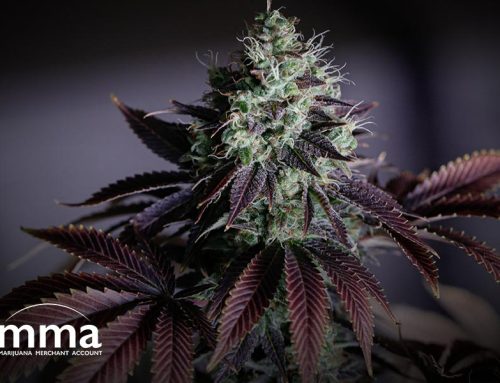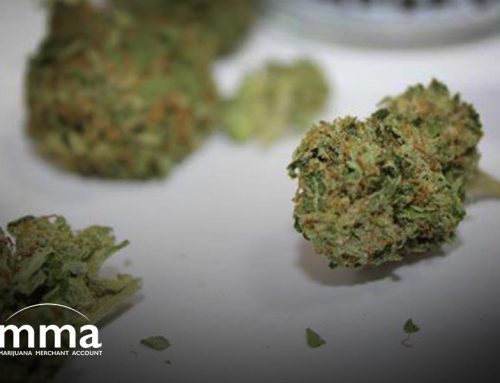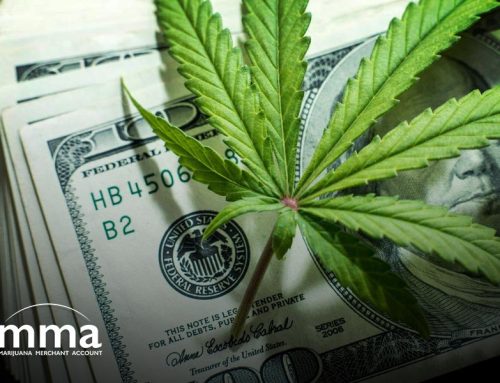The US cannabis industry continues to grow rapidly, with sales topping $26 billion last year and projected to almost double to $50 billion by 2026, according to Forbes.
Marijuana is big business now, and it got to this point despite being largely underserved by banks and other financial institutions due to federal cannabis prohibition.
But the perceived risk of federal reprisals that banks run for working with state-legal canna-businesses is slowly but surely receding in view of the lucrative opportunities the marijuana industry offers.
Banking executives and board members are paying close attention to all marijuana reform moves up and down the country as it’s a potential gravy train they don’t want to miss out on to their competitors.
Here’s the most important cannabis industry trends they’re looking out for in 2022.
1. Legal cannabis sales will launch or expand in multiple states
Seven states legalized recreational cannabis in 2021, but that doesn’t mean legal sales began in those states straight away.
The development and implementation of the rules and regulations that will govern a state’s legal cannabis market takes time, and typically the creation of new regulatory authorities.
New York, New Jersey, and Virginia are still working through all of this, and don’t expect to launch retail cannabis sales until 2023.
Vermont, Connecticut, and New Mexico, however, are set to start legal adult-use marijuana sales in the coming months, while Montana opened the doors of its first marijuana dispensaries on January 1, 2022.
Meanwhile, lawmakers in California and Louisiana enacted legislation last year to significantly expand access to medical cannabis for qualifying patients, and this is expected to kick in this year.
2. More states will legalize cannabis
Three of the seven states that enacted recreational marijuana legalization legislation last year did so due to voter-approved ballot initiatives on Election Day 2020, and the 2022 midterms look set to be another pivotal juncture for cannabis reform in the US.
According to Ballotopedia, there are more than a dozen marijuana legalization proposals in the works for this year’s statewide ballots, many of which are in states where lawmakers have been broadly opposed to cannabis reform.
This includes ballot measures to legalize medical marijuana in Florida, separate measures to legalize recreational and medical marijuana in Nebraska, Idaho and Oklahoma, and adult-use legalization proposals in Arkansas, North Dakota, Ohio, Missouri and South Dakota.
What’s more, a Maryland lawmaker filed a bill that would put a recreational marijuana legalization proposal on the state’s 2022 ballot.
Whether adult-use or medical, any form of cannabis legalization in Nebraska would be hugely significant given it is the only state in the country that’s yet to soften its marijuana possession laws.
While not all proposals will make it onto the final ballot, nor is it guaranteed that voter-approval will ensure lawmakers pass the measure into law, it’s clear that more states will legalize cannabis before the year is out. Banks based in states without a medical or recreational marijuana program in place could very well see that change, and should start planning accordingly.
3. Federal cannabis reform is not guaranteed
Two major marijuana reform proposals are currently in play on Capitol Hill. The Secure and Fair Enforcement (SAFE) Banking Act and the Cannabis Administration and Opportunity (CAO) Act.
The SAFE Banking Act would allow banks to service state-legal cannabis business without federal interference. It’s been approved by the House of Representatives multiple times, but has yet to receive a full floor vote in the Senate.
Initially, this was due to former Senate Majority Leader Mitch McConnell’s opposition to any cannabis reform that didn’t benefit hemp farmers in Kentucky. Now, the hold up is Senate Majority Leader Chuck Schumer’s insistence that more comprehensive cannabis reform, such as the CAO Act he sponsors, should be prioritized.
But the CAO Act has not yet been formally introduced, nor has a final draft of the legislation been released. It’s possible the CAO Act will end up including cannabis banking provisions, but banks shouldn’t take that for granted, nor should they count on the SAFE Banking Act passing the Senate in 2022.
4. Cannabis banking will become essential
More and more financial institutions are working hard to accommodate state-legal marijuana businesses. This means building marijuana banking programs and devising alternative payment options for cannabis retailers to offer their customers instead of cash.
The cost of not working with canna-businesses is seemingly becoming greater than the risk of doing so.
Marijuana entrepreneurs are waking up to their increased leverage, and demanding better treatment by banks or they’ll take their business elsewhere.
Banks that don’t adopt a marijuana banking program in 2022 risk losing valuable customers, and this risk will only increase with time. The combination of state-level momentum for cannabis legalization coupled with eye-watering business opportunities means banks will have to start doing their best to accommodate marijuana businesses.












